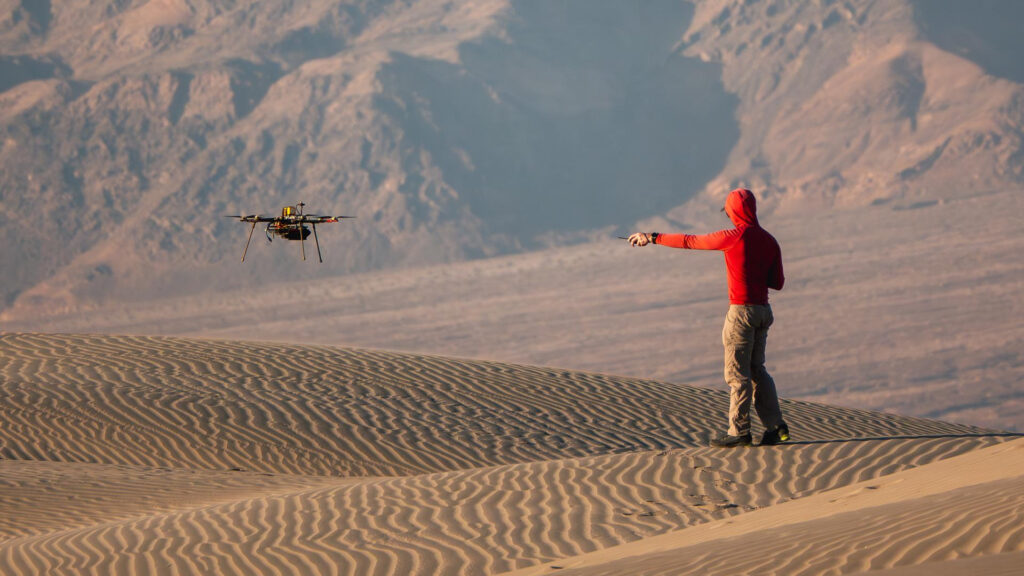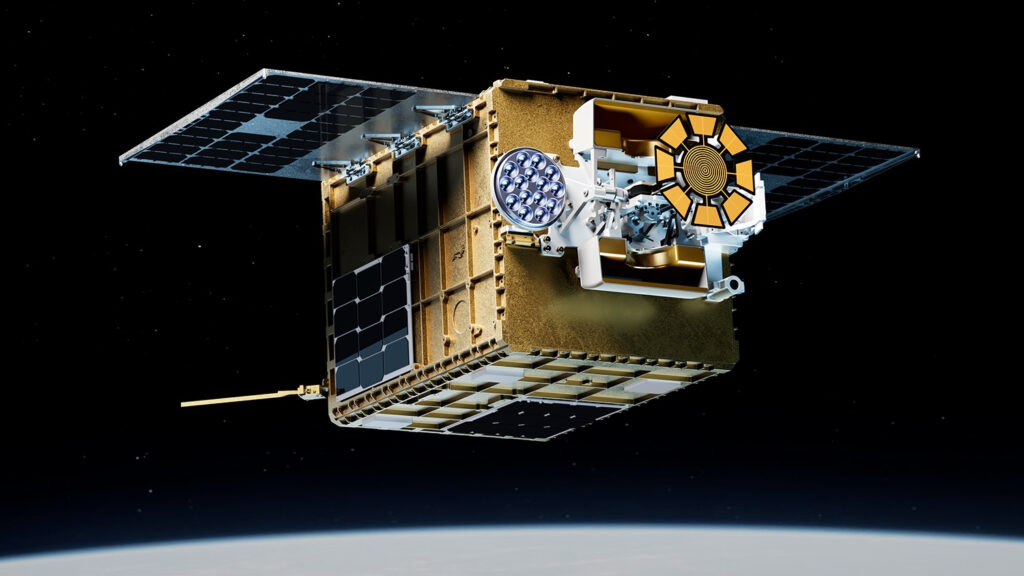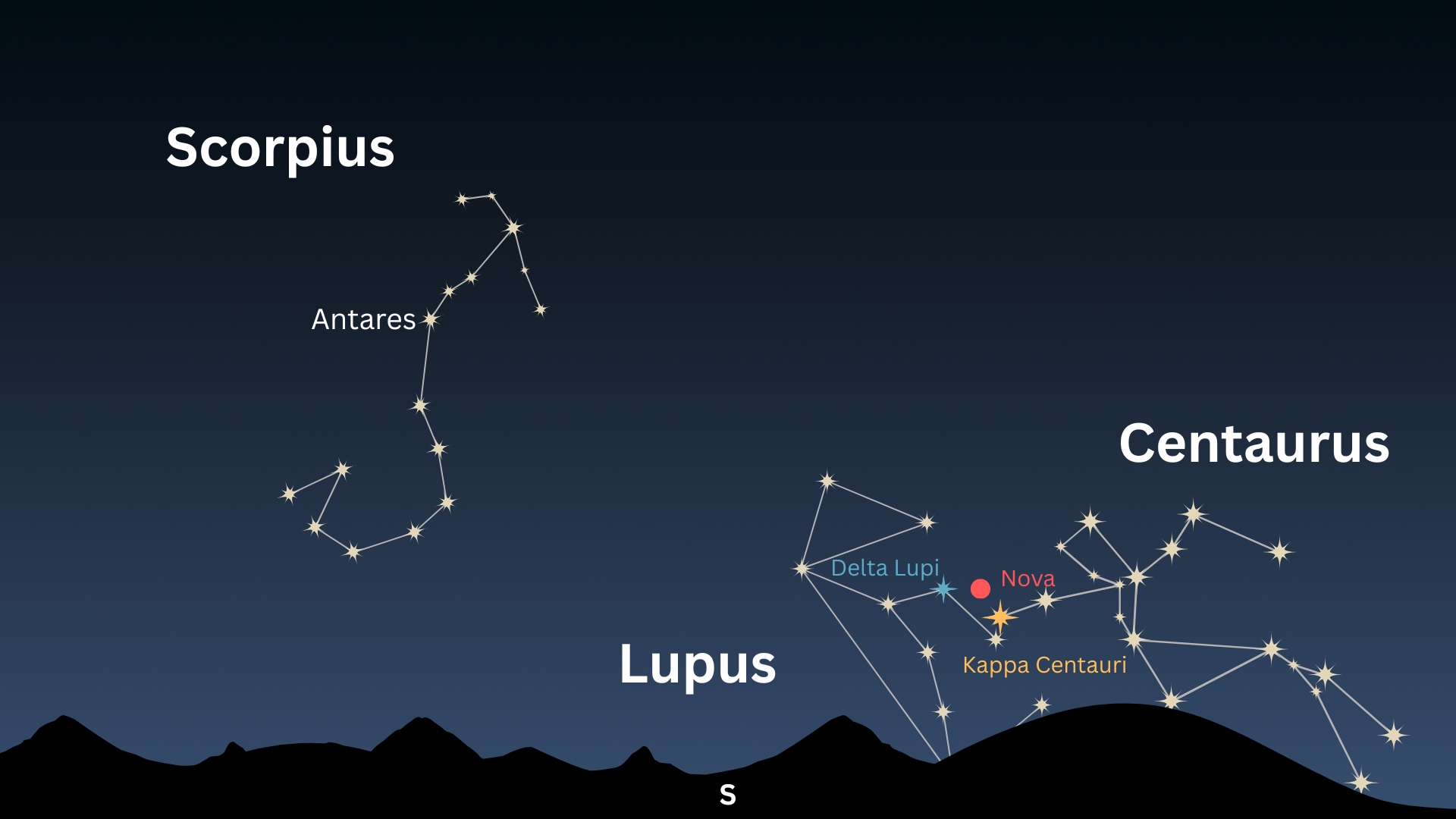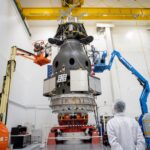Now Reading: Northern lights may be visible in these 10 US States tonight
-
01
Northern lights may be visible in these 10 US States tonight
Northern lights may be visible in these 10 US States tonight
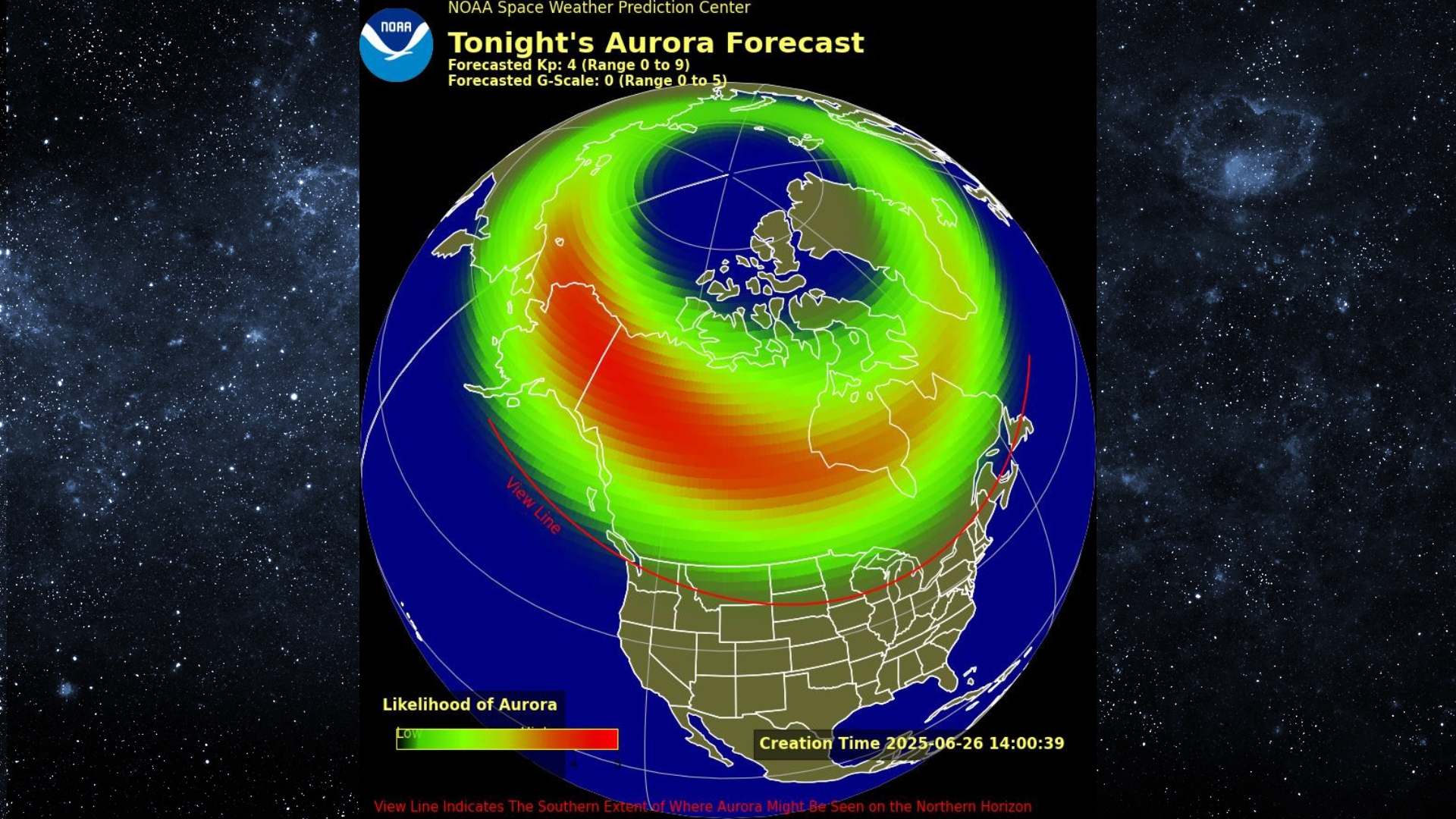
Unsettled geomagnetic activity triggered by high-speed solar winds could spark northern lights over parts of the U.S. tonight (June 26–27), according to the National Oceanic and Atmospheric Administration’s Space Weather Prediction Center (NOAA SWPC).
A colossal coronal hole on the sun has rotated to face Earth and is currently sending a stream of high-speed solar wind our way. As the solar wind slams into our planet’s magnetic field, it disrupts geomagnetic conditions, which in turn can lead to geomagnetic storms and vivid auroras.
Space weather forecasters from the U.K. Met Office and NOAA’s SWPC predict there is a chance of minor (G1) geomagnetic storms tonight as geomagnetic activity remains mainly unsettled to active. That means there’s a window of opportunity for aurora sightings at northern latitudes, weather and darkness permitting.
Where are the northern lights visible tonight?

Based on the latest NOAA forecast, we’ve listed 10 U.S. states that appear either fully or partially above the aurora view line — ordered from most likely to least likely to catch the lights, based on how much of each state lies within the auroral oval.
States that could see auroras tonight:
- Alaska
- Montana
- North Dakota
- Minnesota
- South Dakota
- Michigan (Upper Peninsula)
- Wisconsin
- Maine
- Idaho
- Washington
Remember, auroras can be fickle. Sometimes they can appear much farther south than predicted, and other times they barely show up at all. There are many conditions that have to align for the perfect show. It is possible that many more states could witness auroras tonight, or perhaps far fewer will.
Northern Hemisphere aurora forecast courtesy of the Met Office
How can I see the northern lights from where I live?
Aurora alerts
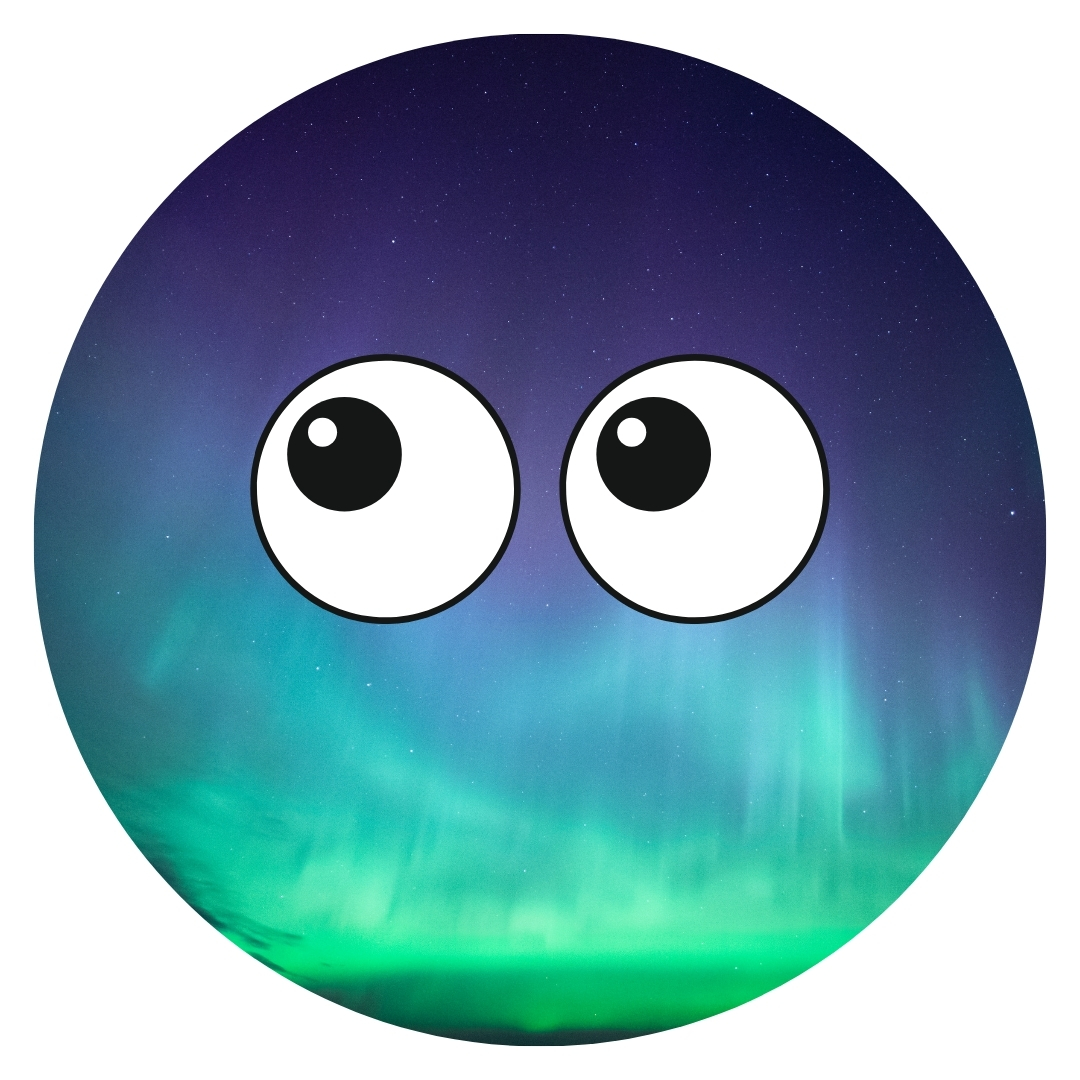
Keep up with the latest forecasts and geomagnetic storm warnings with our aurora forecast live blog.
If you’re in one of the states listed above, your best bet is to head to a north-facing location, far away from city lights. With summer daylight hanging on late, around 1 a.m. local time is typically your best shot.
Try using your smartphone camera to scan the sky — it often picks up faint auroras your eyes might miss. Once your camera catches a hint of green or purple, focus your attention there. That said, don’t forget to glance around — auroras can pop up in front, behind, or right overhead.
If you want to make sure you’re all clued up on when to look for auroras, download a space weather app that provides forecasts based on your location. One option I use is “My Aurora Forecast & Alerts,” available for both iOS and Android. However, any similar app should work well. I also use the “Space Weather Live” app, which is available on iOS and Android, to get a deeper understanding of whether the current space weather conditions are favorable for aurora sightings.
Stay Informed With the Latest & Most Important News
Previous Post
Next Post
-
 012024 in Review: Highlights from NASA in Silicon Valley
012024 in Review: Highlights from NASA in Silicon Valley -
 02Panasonic Leica Summilux DG 15mm f/1.7 ASPH review
02Panasonic Leica Summilux DG 15mm f/1.7 ASPH review -
 03From Polymerization-Enabled Folding and Assembly to Chemical Evolution: Key Processes for Emergence of Functional Polymers in the Origin of Life
03From Polymerization-Enabled Folding and Assembly to Chemical Evolution: Key Processes for Emergence of Functional Polymers in the Origin of Life -
 04How New NASA, India Earth Satellite NISAR Will See Earth
04How New NASA, India Earth Satellite NISAR Will See Earth -
 05And Thus Begins A New Year For Life On Earth
05And Thus Begins A New Year For Life On Earth -
 06Astronomy Activation Ambassadors: A New Era
06Astronomy Activation Ambassadors: A New Era -
07SpaceX launch surge helps set new global launch record in 2024












